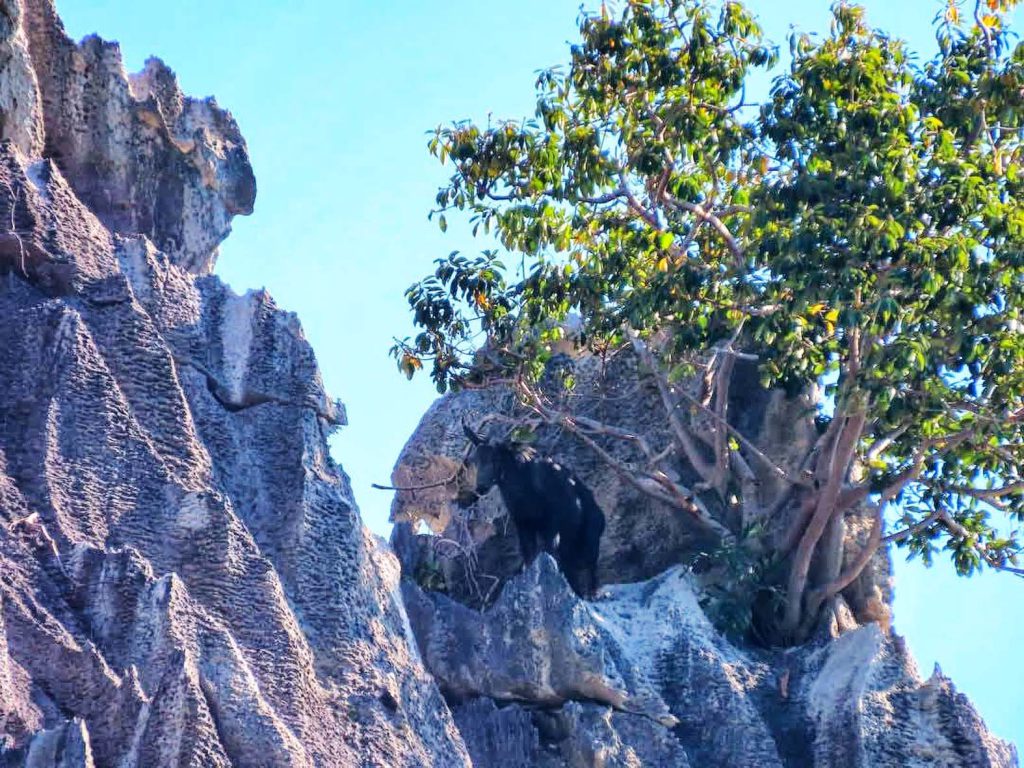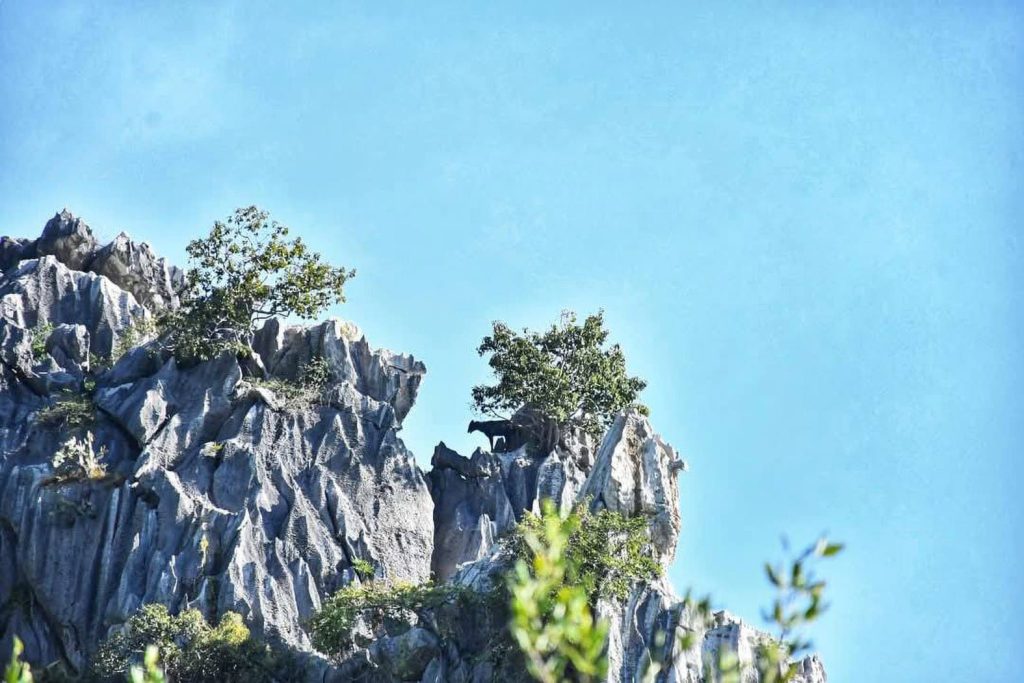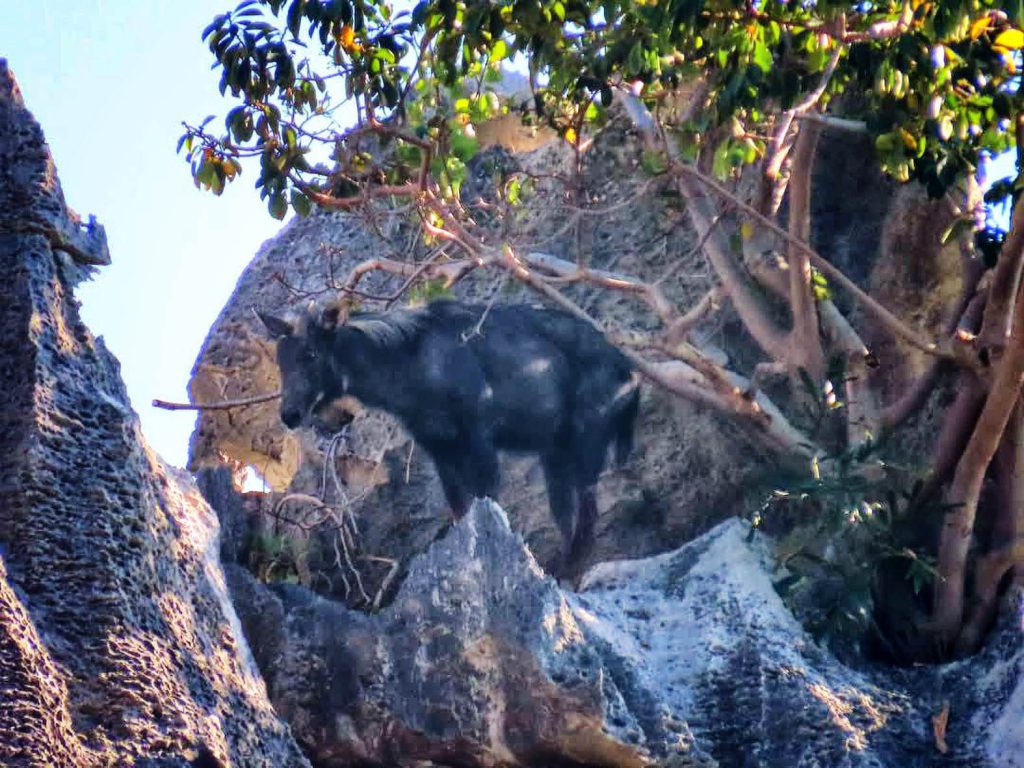A rare serow, an endangered species protected under Thai wildlife conservation laws, has been sighted in Khao Sam Roi Yot National Park.
The discovery was announced on 13 December by Phongsathorn Phromkhunthot, head of the national park, following a patrol by park officials on 11 December.
The animal was observed on a limestone mountain, its distinctive form visible even from a distance. The sighting is a notable event, offering a glimpse of this elusive species and highlighting the ecological richness of Thailand’s first Ramsar wetland.
The serow, scientifically known as Capricornis sumatraensis and locally referred to as “Yeang Pha” or “Khoram,” is a member of the Bovidae family. Its anatomy is well-suited to life on rugged cliffs and mountainous terrain. Classified as endangered on the International Union for Conservation of Nature’s (IUCN) Red List, the serow’s continued presence in the area underscores the importance of conservation efforts.
“Khao Sam Roi Yot National Park encompasses over 98,000 rai (approximately 15,680 hectares) and is home to a variety of ecosystems, including limestone mountains, mangrove forests, grasslands, and wetlands,” said Phongsathorn. “It is a haven for diverse wildlife, particularly waterbirds and migratory species, with over 300 bird species documented within the park.”
The sighting of the serow is seen as a positive indicator of the park’s ongoing efforts to preserve its ecosystems and wildlife. Phongsathorn credited the dedication of park officials and urged the public to play a role in conservation by reporting illegal wildlife activities and adhering to park guidelines.
Beyond its ecological value, Khao Sam Roi Yot National Park is a popular destination for visitors to Prachuap Khiri Khan Province. The park is known for its striking landscapes, significant caves, and nature trails, which offer opportunities for visitors to explore and appreciate its natural and cultural heritage.



